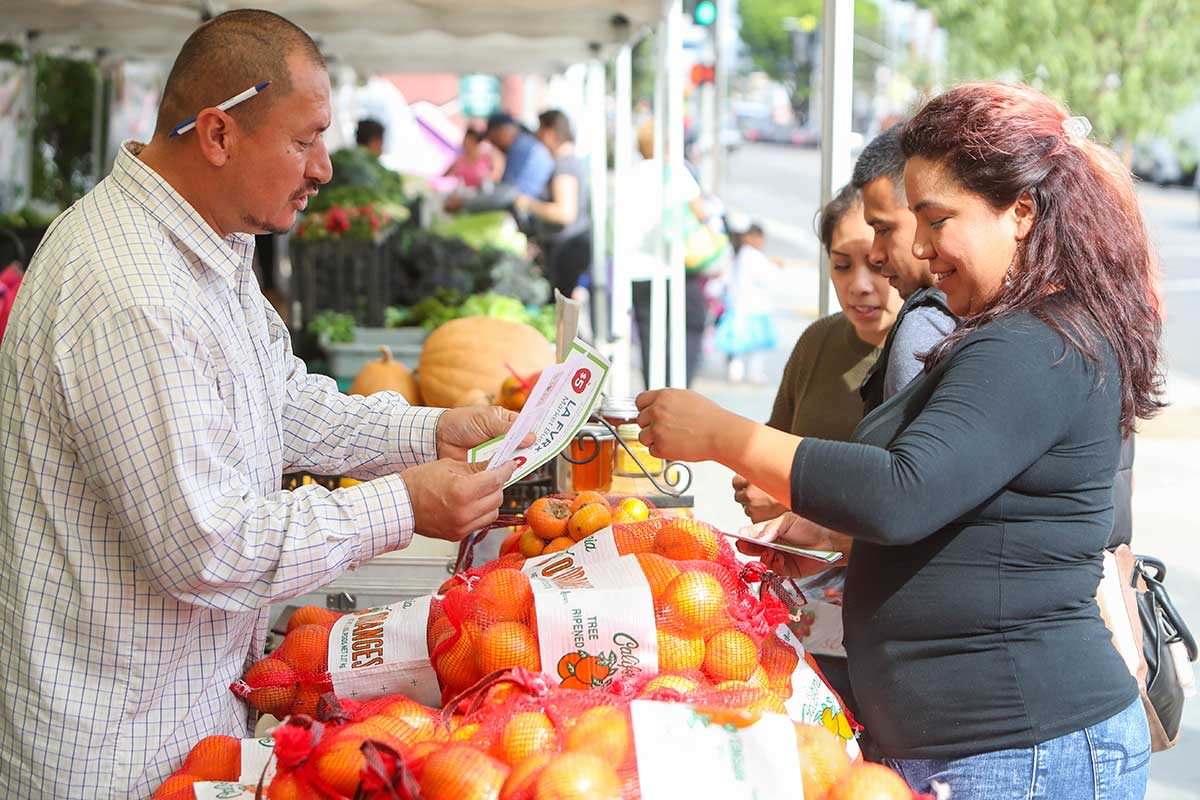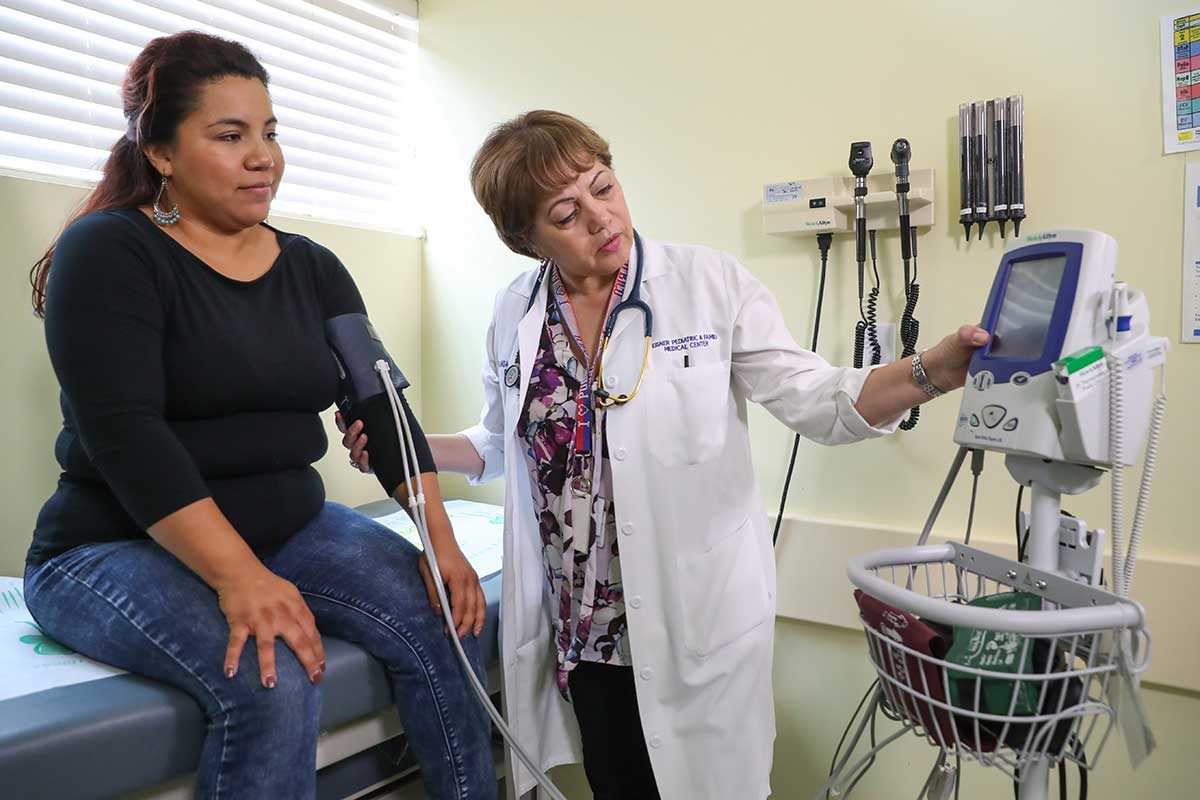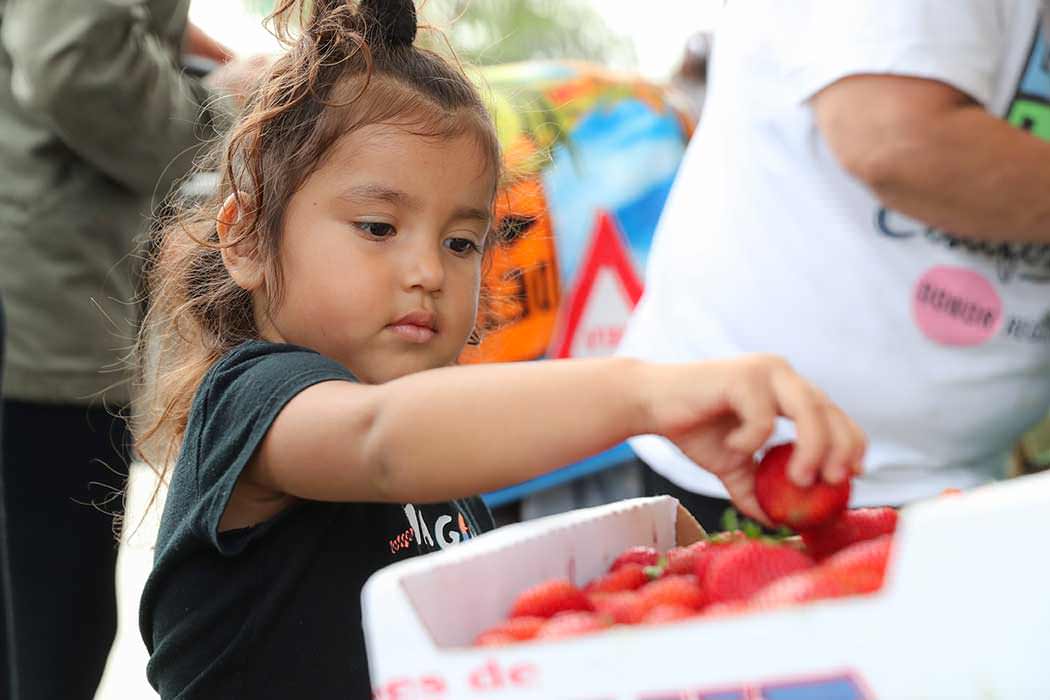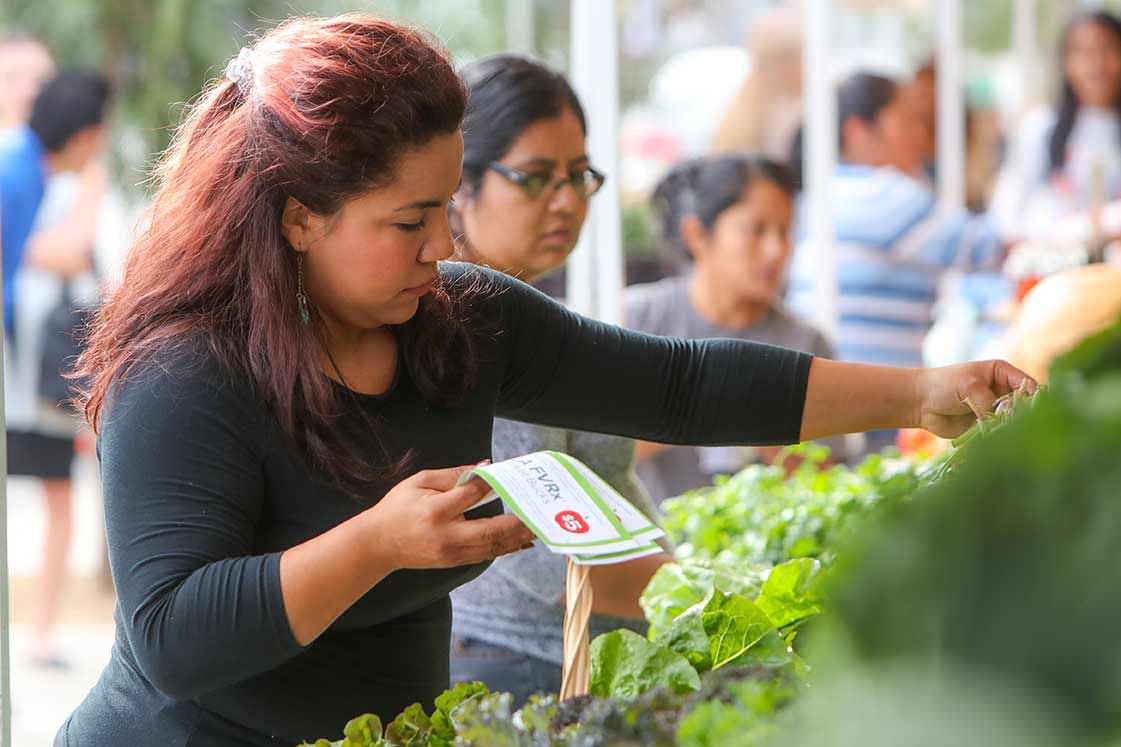Take Three Zucchinis and Call Me in the Morning: The Power of Produce Prescriptions
Wholesome Wave’s fruit and vegetable prescription program meets mega-retail, as Target joins the cause.
Less known is that for the last six years, Wholesome Wave has worked quietly on an equally ambitious initiative: getting healthcare providers to write prescriptions for produce, rather than just pills. It’s called FVRx (Fruit and Vegetable Rx) and its ready to storm the nation – starting with downtown LA.
Target, the national retail chain, has sponsored the biggest FVRx program to date, in which more than 500 families who receive healthcare services at the Eisner Pediatric and Family Medical Center in Los Angeles are now receiving produce prescriptions from their doctor, along with vouchers to purchase fresh produce at Target stores and nearby farmers markets.
Who FVRx Serves
All of the participating families are living at or below the poverty line, and a quarter of the children are over the 85th Body Mass Index percentile, which classifies them as overweight or obese. The vast majority of families who are enrolled are already receiving SNAP benefits, which provide about $4 per person per day for food. For a family of four, the FVRx program adds another $4 per day, which must be spent exclusively on fresh produce.

Most folks do what their doctor tells them to, especially if the instructions are given as a prescription. That’s exactly the magical power of the FVRx program. It’s not nutritional advice, it’s a command.
Folks with limited financial resources tend to spend their food budget on the cheapest possible calories. But unfortunately, the cheapest calories often come from highly processed foods that are low in nutrients and are high in sugar, unhealthy fats, preservatives, and other substances the human body isn’t designed for. A bowl of Fruit Loops will fill you up in the morning for a fraction of the cost of all-natural yogurt, blueberries and whole-wheat bread. Which is why the United States spends about $500 billion per year treating diet-related illness and disease.
Diabetes, one of the biggest, costliest diet-related health problems, is directly related to childhood obesity, for example. FVRx gives doctors, who are by nature more focused on treating medical conditions than on preventing them, a new tool to fight it. Rather than watch helplessly as a child grows up overweight, and then one day is forced to begin insulin therapy as a diabetic, the hope is to get kids hooked on healthy food long before the first signs of illness appear.
Why It’s Working

The idiom, Eat your vegetables! has been so beaten into American culture as to be meaningless. But most folks do what their doctor tells them to, especially if the instructions are given as a prescription. Julia Pon, vice president of programs at Wholesome Wave, says that’s exactly the magical power of the FVRx program. It’s not nutritional advice, it’s a command.
“Healthcare professionals tell us they are always recommending changes in diet, and yet it’s so exasperating to counsel people with pre-diabetic children about eating more fruits and vegetables and then they see them again six months later and nothing has changed,” says Pon. “But the doctors in this program tell us how powerful it is to literally be able to write a prescription. One of the doctors in LA said to me, ‘instead of Lipitor [a drug used to treat cardiovascular disease], I am literally prescribing carrots and cucumbers and green beans’.”
Wholesome Wave has previously piloted FVRx in several locations, including Minneapolis, New York City, and the Navajo Nation in Arizona, though the LA program, which touches more than 2,500 residents of an Hispanic neighborhood in central Los Angeles, is the largest so far. Over the last six years since FVRx was first developed, it has been streamlined into a “simple, but successful” formula, says Pon.
The crucial ingredients are a neighborhood-based healthcare center, which serves as the point of contact with individuals in need; food providers, which are typically a combination of local retail stores (for ease of access) and farmers markets (for more produce variety and a greater connection to where the food comes from); and a third entity that provides health and diet counseling and other services aimed it fostering the skills and habits of healthy eating.

For the Los Angeles FVRx program, a local organization called Groceryships, which describes itself as a “scholarship program” for healthy eating, provided a nutritional education course for a portion of the participants. Eisner also offered classes, which were required in order to receive the vouchers. The classes include cooking demonstrations, Spanish-language children’s cookbooks, field trips to the farmers market, and tour of the produce section at a nearby Target – “Target has more produce than most people think,” says Pon.
Becky Murphy, vice president of clinical services at Eisner, says the response has been overwhelming, with far more interest than the funding for the current seven-month program, which is set to expire this month, can provide.
“Our patients are thrilled with the program. We are already seeing that the participants are increasing the number of fruits and vegetables they’re eating every day and decreasing the amount of sugar in their diet. One of our clients went to the farmers market with her kids and let them pick out whatever fruit they wanted, and then they went home and made popsicles with each one of their fruits. So it’s a great way for the kids to try different things.”
Proof Points
At the end of the program, participants will be evaluated on their progress. In previous iterations of the FVRx program, Wholesome Wave found that 69 percent of participants increase fruit and vegetable consumption and 45 percent decreased their BMI. In addition, food security in participating households improved by 45 percent.
As of early December, the 544 participating families in Los Angeles had spent $150,000 worth of vouchers, half of that at local farmers markets, a significant boon to area farmers. It’s part of a larger $40 million commitment by Target to address the health needs of children and families across the country this year. The company estimates that more than 225,000 pounds of fresh fruits and vegetables will be purchased by the conclusion of the program.
Pon says Target’s involvement raises hopes that FVRx will soon expand nationwide. “One thing about having a major retailer like Target at the table as not only the funder but also a program partner, is that they were able to provide vouchers in the form a scannable card that works through their POS system, and is co-branded with the farmers markets, so they can redeem the vouchers there as well. The system was built to be replicated.”
While Target has not yet made a firm commitment to continue, Jennifer Silberman, the company’s director of corporate social responsibility, said in a statement emailed to Modern Farmer, that “we are excited to assess the results of this program and learn how best to replicate and scale it. We’re in the process of solidifying our 2017 strategies and look forward to sharing them in the future.”
If they follow through, FVRx may revolutionize fresh food access across the nation, and help to put a dent in that $500 billion medical bill.
Follow us

This work is licensed under a Creative Commons Attribution-NoDerivatives 4.0 International License.
Want to republish a Modern Farmer story?
We are happy for Modern Farmer stories to be shared, and encourage you to republish our articles for your audience. When doing so, we ask that you follow these guidelines:
Please credit us and our writers
For the author byline, please use “Author Name, Modern Farmer.” At the top of our stories, if on the web, please include this text and link: “This story was originally published by Modern Farmer.”
Please make sure to include a link back to either our home page or the article URL.
At the bottom of the story, please include the following text:
“Modern Farmer is a nonprofit initiative dedicated to raising awareness and catalyzing action at the intersection of food, agriculture, and society. Read more at <link>Modern Farmer</link>.”
Use our widget
We’d like to be able to track our stories, so we ask that if you republish our content, you do so using our widget (located on the left hand side of the article). The HTML code has a built-in tracker that tells us the data and domain where the story was published, as well as view counts.
Check the image requirements
It’s your responsibility to confirm you're licensed to republish images in our articles. Some images, such as those from commercial providers, don't allow their images to be republished without permission or payment. Copyright terms are generally listed in the image caption and attribution. You are welcome to omit our images or substitute with your own. Charts and interactive graphics follow the same rules.
Don’t change too much. Or, ask us first.
Articles must be republished in their entirety. It’s okay to change references to time (“today” to “yesterday”) or location (“Iowa City, IA” to “here”). But please keep everything else the same.
If you feel strongly that a more material edit needs to be made, get in touch with us at [email protected]. We’re happy to discuss it with the original author, but we must have prior approval for changes before publication.
Special cases
Extracts. You may run the first few lines or paragraphs of the article and then say: “Read the full article at Modern Farmer” with a link back to the original article.
Quotes. You may quote authors provided you include a link back to the article URL.
Translations. These require writer approval. To inquire about translation of a Modern Farmer article, contact us at [email protected]
Signed consent / copyright release forms. These are not required, provided you are following these guidelines.
Print. Articles can be republished in print under these same rules, with the exception that you do not need to include the links.
Tag us
When sharing the story on social media, please tag us using the following: - Twitter (@ModFarm) - Facebook (@ModernFarmerMedia) - Instagram (@modfarm)
Use our content respectfully
Modern Farmer is a nonprofit and as such we share our content for free and in good faith in order to reach new audiences. Respectfully,
No selling ads against our stories. It’s okay to put our stories on pages with ads.
Don’t republish our material wholesale, or automatically; you need to select stories to be republished individually.
You have no rights to sell, license, syndicate, or otherwise represent yourself as the authorized owner of our material to any third parties. This means that you cannot actively publish or submit our work for syndication to third party platforms or apps like Apple News or Google News. We understand that publishers cannot fully control when certain third parties automatically summarize or crawl content from publishers’ own sites.
Keep in touch
We want to hear from you if you love Modern Farmer content, have a collaboration idea, or anything else to share. As a nonprofit outlet, we work in service of our community and are always open to comments, feedback, and ideas. Contact us at [email protected].by Brian Barth, Modern Farmer
January 31, 2017
Modern Farmer Weekly
Solutions Hub
Innovations, ideas and inspiration. Actionable solutions for a resilient food system.
ExploreExplore other topics
Share With Us
We want to hear from Modern Farmer readers who have thoughtful commentary, actionable solutions, or helpful ideas to share.
SubmitNecessary cookies are absolutely essential for the website to function properly. This category only includes cookies that ensures basic functionalities and security features of the website. These cookies do not store any personal information.
Any cookies that may not be particularly necessary for the website to function and are used specifically to collect user personal data via analytics, ads, other embedded contents are termed as non-necessary cookies.
